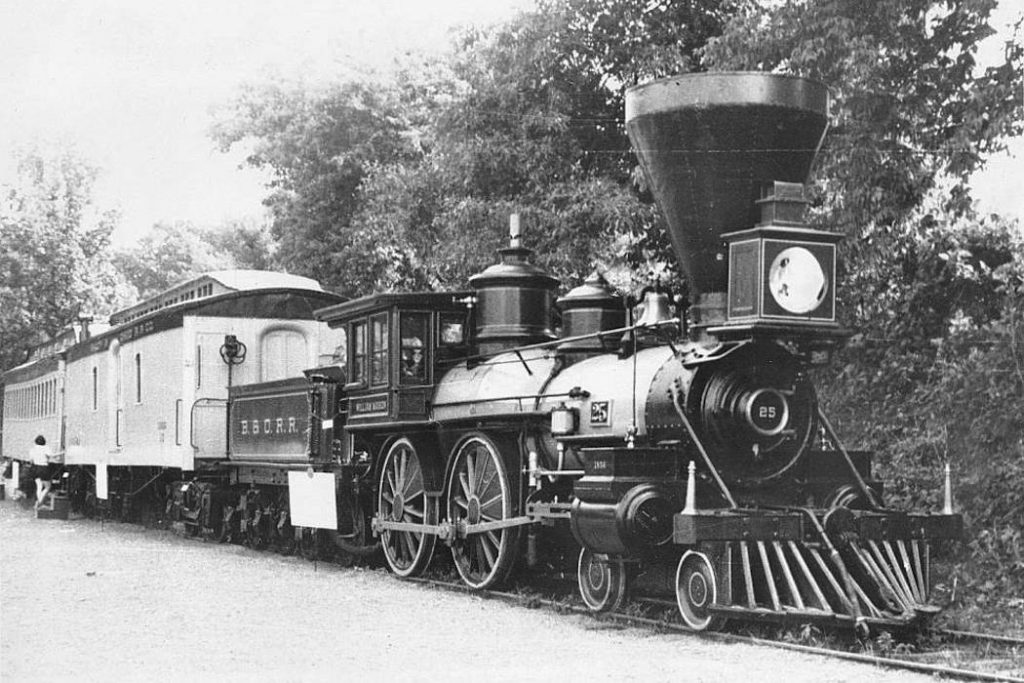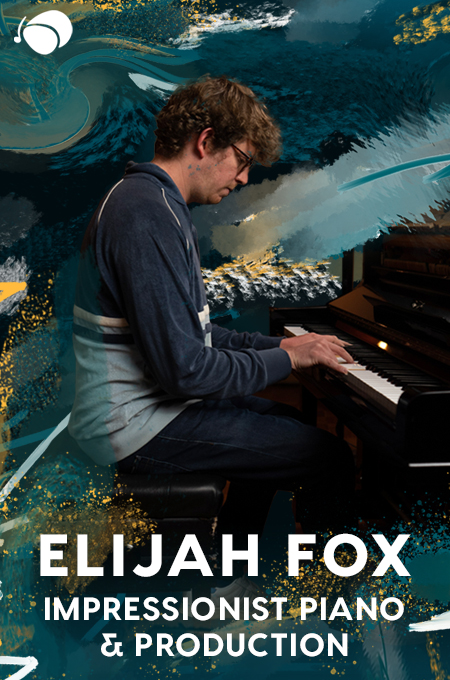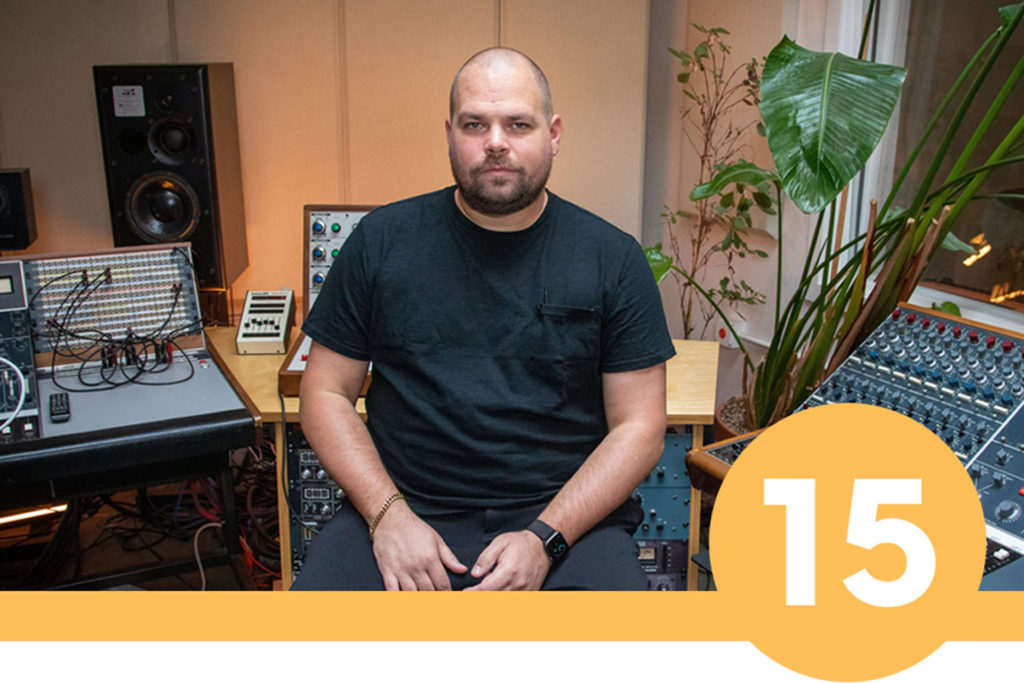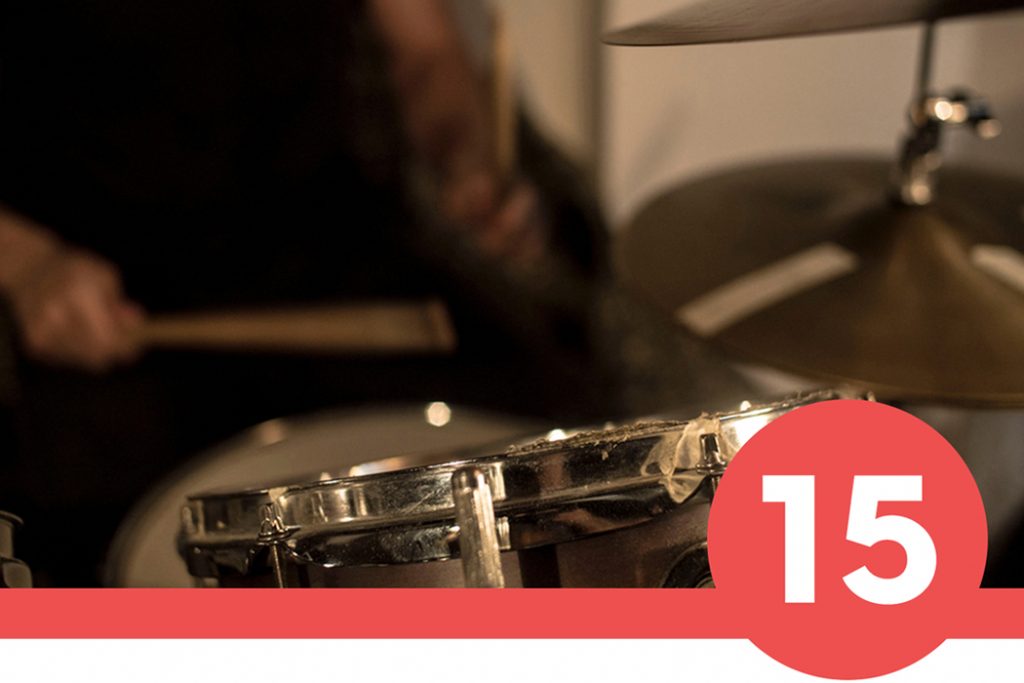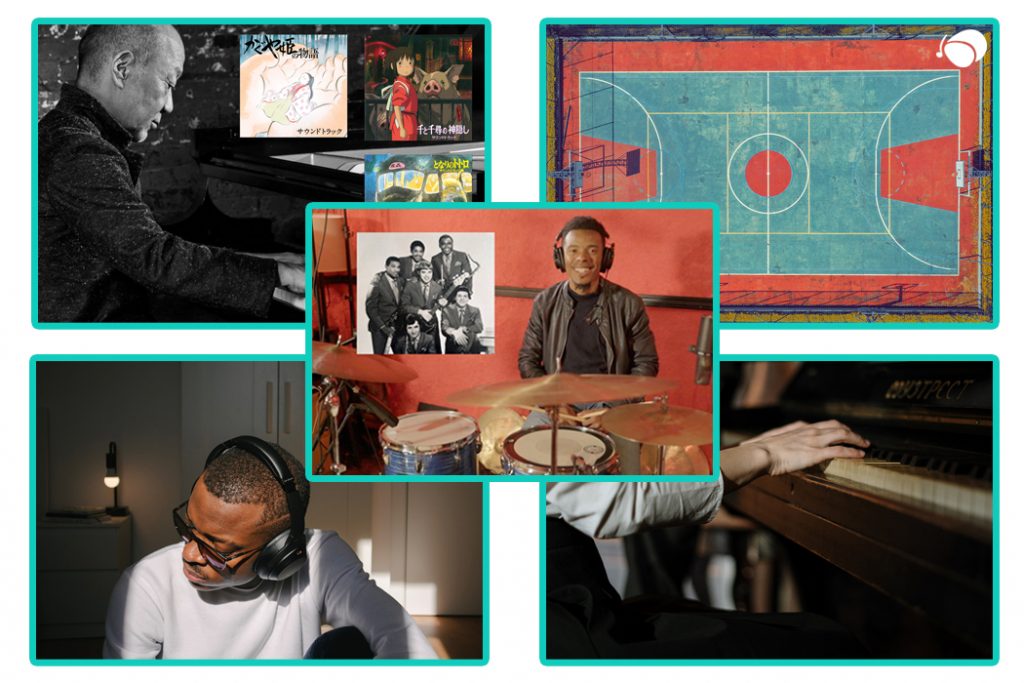These days I take the train to work every day on a commuter line. As I stand on the platform waiting for mine to arrive, often for up to 20 minutes, I sometimes gaze out onto the busy train yard and reflect on the expansive sonic landscape produced by these behemoths of transport. So many rumbles, bellows, wimpers and whispers. Listening to a train is a deeply personal experience. As it turns out, there’s a dense community of people out there who, for their own very personal reasons, feel the same way. Railfans, as they are referred to colloquially, or perhaps how they self-identify, study, collect and converse about trains, and their bodies of sound, from every imaginable angle. And there may be nobody more in tune with the subtleties of every train’s unique sound than Jay A. Winn. This is his story.
The Birth of an Obsession
Winn runs a website and mail-order archival CD catalog called Vintage Railroad Audio, which is the culmination of over 50 years of recording and collecting train audio. Here you’ll find 318 programs, collections of sounds tightly and expertly curated to paint perfect pictures of extinct locomotives: various machines running on specific regional lines, highlights of engines and whistle technology, and even narrative portraits of railroads in transition over time.
There’s an undeniably nostalgic pull here, especially for those who grew up nearby active railroads with these familiar, regionally- and technologically-specific tones and rumbles. For many, it’s the soundtrack to their lives. And for Winn, this soundtrack was and always will be his life. Starting from around age 6, Winn accompanied his grandfather, Harolde Simon, a professor of mechanical engineering, on trips to watch trains roll by. He explained the intricacies of how locomotives worked, and they studied them, smelled them and above all, listened to them, together.
“By the time I was 8, I could tell what kind of feed water heater made that sound, and what kind of pump made this sound etc., not to mention a basic understanding of what function each appliance accomplished. When my grandfather and I came home from a day of train watching (and listening), there was always a quiz to determine what I had learned.”
Not surprisingly, Winn’s grade 7 science project was entitled, “How a Diesel Locomotive Works”. Pretty soon, he acquired his first camera in order to document all the trains he watched, but photography was always secondary to his desire to “bring home the sound.” This was the 1940s, however, and back then recording equipment was expensive, cumbersome, and not necessarily portable. But Winn’s grandfather had a friend, George, also a professor of mechanical engineering, who had access to his university’s recording equipment and was keen to use it “in the field.” He describes these early recording trips with George as both fascinating and intimidating.
“He set up his microphones, hooked up the batteries, fired up the equipment and then sat on a folding campstool near the trunk of his car with a headset clamped over his ears and waited for the trains. When he recorded, he monitored the equipment manually as he listened, madly twisting and tweaking the many different knobs on his consoles as the train approached and roared by.”
By late 50s, Winn acquired a modest consumer grade reel-to-reel tape recorder and all the necessary equipment to feed his desire to keep going back out to the railroad for recording. Eventually photography completely fell by the wayside, as Winn was more interested in being able to play back the sound immediately, as opposed to waiting weeks for photo processing. Over the next few years and well into his adult life, Winn befriended a few fellow railfans who helped him pursue his passion, and he continued recording and collecting all the train audio he could find.
One employee of the GE Radio Receiver Division, who had access to experimental sound recording equipment in the Research & Development labs, helped supply him with state-of-the-art professional gear to test in the field. Humorously, he ran into problems with new “noise reduction” technology when it was just coming onto the market. Since the sounds of a train “really are basically ‘noise’ as interpreted by such systems… it will do its best to electronically reduce what it detects as noise.” In other words, Winn sought equipment that would help provide a clear recording of exactly what the technology was designed to remove.
Winn’s passion for recording only grew, and as his collection grew, he became a somewhat self-taught expert at editing and cleaning up tape audio to make his recordings as listenable as possible.
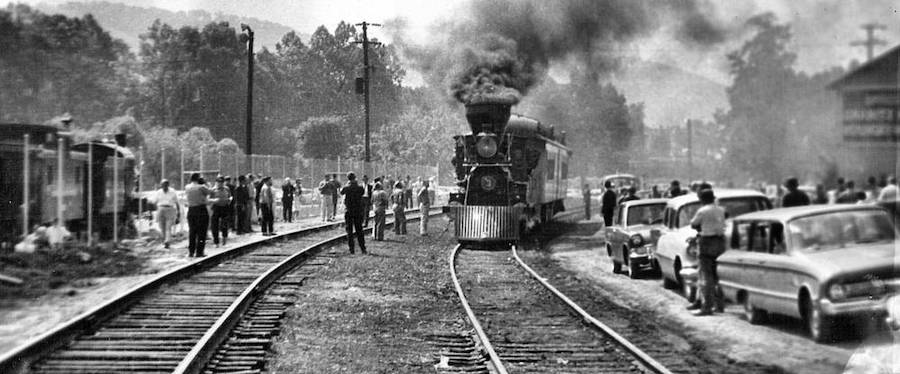
Finding a Community
One Christmas, he sent copies of some newly consolidated programs to a few railfans as gifts, and virtually everybody had the same loving response. His recordings brought back wonderful memories for each listener, and it occurred to him that if his friends were interested in listening to these tapes, perhaps others were too. Winn attempted to generate wider interest in these recordings through classified ads in a number of railfan publications, but it didn’t immediately seem like people were really interested in train sound. Yet there were, and had been for years, commercially available tapes and records compiling train sounds. So he began researching.
“In one memorable instance I bought a tape that purported to have a couple of clips of NYC Alco FA’s on it, but as soon as I played it, I realized that there were certainly no Alco FA’s on that recording. One clip was actually an RS3, and the other was an FPA4. I contacted the producer of the tape to discuss my discovery and he was at first, indignant. His initial response was “FA , RS3, FPA4 what difference does it make they are all Alco!”. The seller then asked just how in blazes did I detect the difference and expose his little subterfuge. I explained that although the FA and RS3 both had Alco 244 prime movers the FA 244 was inside a large car body and the RS3 244 was inside a hood and that made for subtle but real differences in the sound produced when recorded from outside the unit. As for the FPA4, that was a no-brainer since it had a turbocharged 251 prime mover, which sounds altogether different from a 244.”
Lo and behold, it became obvious that if there really was a community out there that cared about train audio, like Winn, his grandfather and his cohorts, their interests were not being served by these commercial publishers. And although it was still difficult for Winn to tap into this invisible community, he knew that his recordings were of a much higher quality, and that his detailed notes were miles more accurate.
And then along came eBay.
“One fateful day I noticed a railroad sound recording being currently offered on eBay and after reading the description, chuckled knowingly to myself that this particular auction was going nowhere. You can only imagine my surprise when this particular auction not only garnered dozens of bids but also a respectable price. Not one to miss an opportunity I started showcasing a few copies of my completed programs on eBay and it was at best only marginally successful.”
But the real goal, in his mind, was to sniff out other audiophiles obsessed with trains, and to grow his tape library through networking and sharing. Many fellow railfans, intrigued by his carefully chosen programs, took note of Winn’s ability to repair damaged tape recordings from decades earlier and sent him their tapes. A community was starting to take shape.
Winn told me a story of an ex-New Haven Railroad engineer who contacted him to clean up his old reel-to-reel tapes and dub them to cassettes so he could play them in his car. Winn was elated that this man had piloted all the great New Haven passenger electrics: the EP3s, EP4s and EP5s. Most of his material was noisy and overdriven, but since it was a personal project, he dutifully obliged.
“His fellow railroad workers did not know he was a railfan. Fearing he would be ridiculed or even fired, he secreted his recording equipment inside his partially open lunch box, placed it in some obscure spot in the locomotive and dutifully recorded each trip from inside the cab.”
From the 12 hours of raw recordings that he was given, Winn was able to salvage enough really high quality audio to put together an entire program of “New Haven Electric Power”.
“The retired engineer was elated with the final result and I had acquired yet more rare sound and another program to add to my collection. To this day, he still wishes to remain anonymous, since he doesn’t want any of his former colleagues to ever know he was a railfan.”
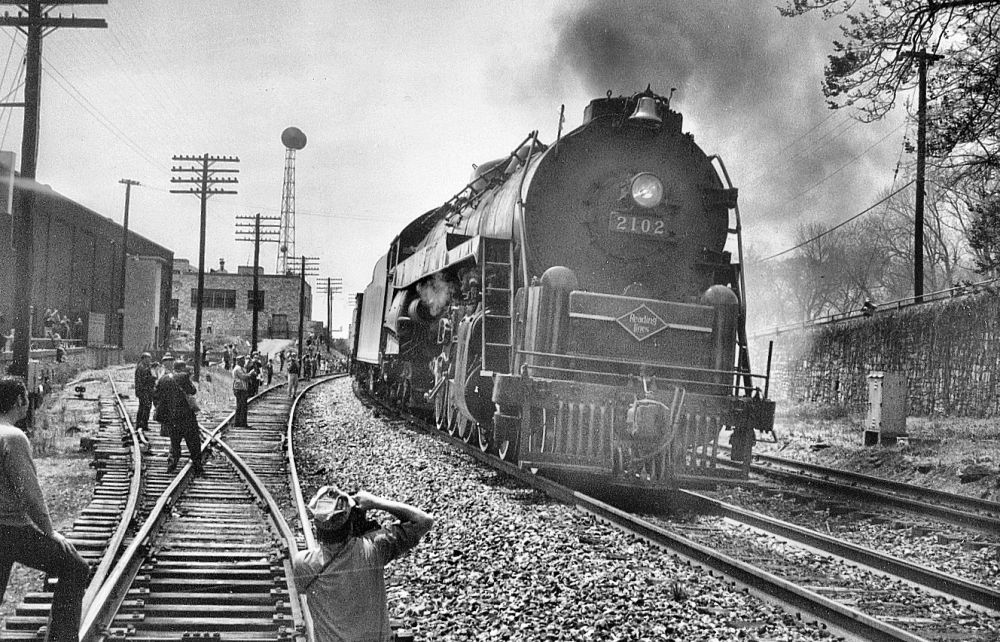
Lessons Learned
Winn’s archive, Vintage Railroad Audio, is like a real-time working experiment in nostalgia. Over the last 50 years of recording and collecting train audio, he’s learned a few things. Of course, there’s much too much to share here, but the breadth of consideration of what makes a program resonate is beautiful. Here’s a few things he learned along the way:
1) Each program should tell a story.
“There should be some continuity… Programs that are made up of just sound clips randomly placed, with little information, and a sparse description won’t create much of a picture in the listener’s mind, unless of course he is gifted with a very fertile imagination.”
2) Train sounds recorded “in service” are infinitely better than on “fantrips”.
“Fantrips can be exciting and memorable, but they can also be compared to seeing animals at the zoo. Folks come to see and hear the rare objects, but in a zoo, they are not in their truly natural setting. Listeners who never heard a real locomotive in action certainly will appreciate a fantrip sound to some extent, but once they have heard the natural workday sound of trains in action, they will be able to discern the real difference.”
3) With regards to taking field recordings, always keep an eye on your batteries and replace them after a certain amount of time. Weak batteries may affect the sound, causing irreversible damage to a recording. Oh, and nighttime trips tend to yield the clearest, crispest sound.
“The air temperature is also a major factor. Cold air generally makes for better recordings with more ‘presence.’”
4) Priority should be given to the preservation of retired and extinct trains over newer recordings of modern trains.
“All the digital technology in the world will not let us recreate sound from locomotives that no longer exist, and that we must preserve what we have before it is lost forever. A very significant percentage of my sound library really does represent trains which no longer exist and which can never be recorded again.”
5) Finally, the real reward for preserving train sound is that it allows people to relive their fondest railroad-related memories, over and over again.
“One fellow sent a cryptic email that simply said… ‘I played the D&H steam CD four times and my living room is now covered with cinders…’ Another reported that after playing one of the Alco diesel CDs at about 10 decibels-above-loud, his neighbors reported hearing locomotives switching cars in his backyard. Another memorable time I had been commissioned to make a special program for a steam aficionado on the occasion of his 95th birthday. When I phoned him on his birthday and asked his wife how he liked the program, she said ‘he is listening to it now and he is crying.’”
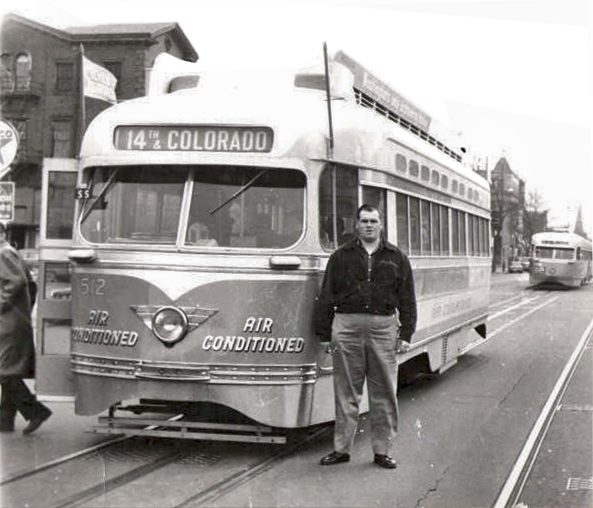
Nostalgia & Memory
Vintage Railroad Audio attracts both enthusiasts and laypeople alike. There really was, as Jay had predicted, a whole lot of home-recorded train audio out there. America has been covered in great rail lines for over 100 years. It’s no secret that locomotives have undergone countless radical and incremental improvements in design, technology, power engineering, and structure over time. This landscape of sound is as vast and dynamic as the Rockies bursting through Montana, and every line is someone else’s memory of home.
With regards to selling and disseminating programs of audio, Winn has learned that in general people respond emotionally to one of three nostalgic categories: location, specific railroad company, and locomotive type.
“Every railfan has a fond memory or two that they would like to re-live… Many people associate their train memories to a specific location, like Oneonta, Binghamton, or the Hoosac Tunnel. In other cases, people respond to the memory of the railroad that ran through their hometown, and as long as the sound was from that specific railroad, then they emotionally connect to it. In the third instance, certain people fondly remember specific favorite locomotive types and it doesn’t matter which railroad or location.”
He naturally took careful notes documenting the train, locomotive types, location, date, and data relating to the audio conditions out in the field, so that whenever he wanted to relax at home, he could skim through the tape library and select a tape such as “The July 1970 trip to Altoona” and vicariously relive this experience. Winn, though, is a specialist. One in a million. For a non-musician, his ear is rivals the greatest sight-readers and improvisers ever.
“Quite unexpectedly, although I had written specific and detailed notations for each tape, I found that I rarely needed them, because after the first few seconds of the actual sounds, the memories of that particular trip all came flooding back… I developed a very critical and knowledgeable ‘ear’ for the sound. Like the old Dennis James TV program ‘Name that Tune’ there weren’t many train sounds I couldn’t correctly identify after a few seconds of listening.”
Yet his memories of visiting the railroad track with his grandfather, Harolde, are touchingly universal. Train watching, and the process Winn goes through to capture every fleeting sound, are to some degree about these forged connections. Connecting to the past, connecting with one’s surroundings or loved ones and, through tape-sharing, connecting with a vast network of people who share the your interests.
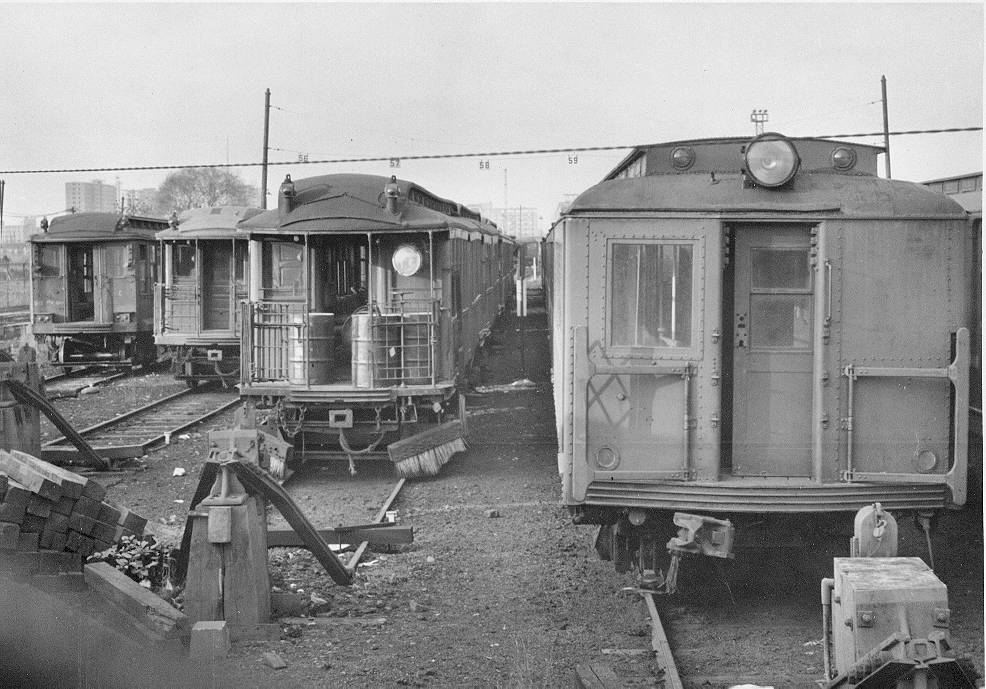
The Railroad as Metaphor
The railroad itself is a connector, a bridge between cities and communities. No matter what trains are running those lines, there will always be a way to get where you’re going. It is almost as if this vast connectedness of national railroad pathways has itself inspired the ways railfans and other archivists are able to communicate and share across incredibly strong DIY networks.
Not all raifans are preservationists, yet most subscribe to the activity of archiving or collecting, at least by way of capturing the object of their affection in the way that is purest to their own experience of the railroad. Historically, creative manifestations of these captured experiences straddle every artistic medium, from photography, painting and sculpting to audio, video and writing. Upon seeking out the myriad ways railfans express and share their resources amongst one another, I was delighted to find a fansite dedicated to reviewing “motels with a railroad view” called Railfan Motels.
This fascinates me because when you read about railfans, there’s a tendancy to imagine that people with this much passion must be somewhat anti-social, stubbornly secret obsessors, but this pointed to the side of this community that lives for gathering and experiencing those sought-after connections in public. Railfans constantly strive to develop and strengthen the ties, switches, and signals that connect one another.
But at the same time, the locomotive is — tragically — always leaving. It reminds us of the passing of time. It is the curse which is also the source of its beauty. The precious and poetic nature of the passing train’s ephemeral existence, coming into view as quickly as it disappears, is succeeded only by what is left behind. Forever lingering, unchanging and constant, that old rusty railroad track (embodied as a memory on an audio track) represents the opposite of that feeling, and offers something you can always return back to, if and when you need to relive your memories.
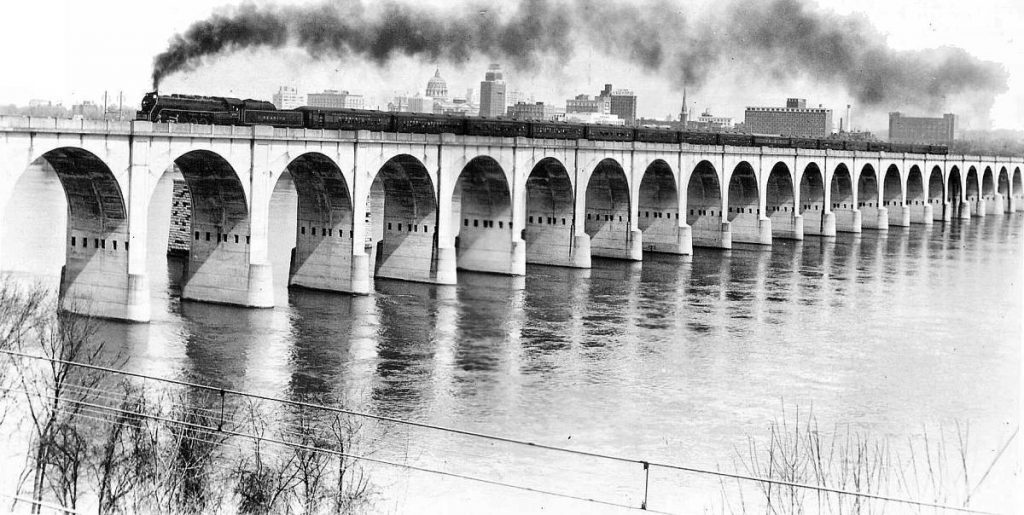
Images of Railroads and trains provided by Saul Nadler. To view loads more historical and contemporary photos, (including hundreds of old NYC subway photos) visit his archive here.
All sounds provided by Jay A. Winn, taken from programs #197 and #208.
